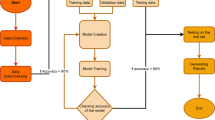Abstract
Autism Spectrum Disorder (ASD), which is a neuro development disorder, is often accompanied by sensory issues such an over sensitivity or under sensitivity to sounds and smells or touch. Although its main cause is genetics in nature, early detection and treatment can help to improve the conditions. In recent years, machine learning based intelligent diagnosis has been evolved to complement the traditional clinical methods which can be time consuming and expensive. The focus of this paper is to find out the most significant traits and automate the diagnosis process using available classification techniques for improved diagnosis purpose. We have analyzed ASD datasets of toddler, child, adolescent and adult. We have evaluated state-of-the-art classification and feature selection techniques to determine the best performing classifier and feature set, respectively, for these four ASD datasets. Our experimental results show that multilayer perceptron (MLP) classifier outperforms among all other benchmark classification techniques and achieves 100% accuracy with minimal number of attributes for toddler, child, adolescent and adult datasets. We also identify that ‘relief F’ feature selection technique works best for all four ASD datasets to rank the most significant attributes.




Similar content being viewed by others
Explore related subjects
Discover the latest articles, news and stories from top researchers in related subjects.References
Thabtah F, Abdelhamid N, Peebles D. A machine learning autism classification based on logistic regression analysis. Health Inf Sci Syst. 2019;7(1):1.
Wiggins LD, Reynolds A, Rice CE, Moody EJ, Bernal P, Blaskey L, Rosenberg SA, Lee LC, Levy SE. Using standardized diagnostic instruments to classify children with autism in the study to explore early development. J Autism Dev Disord. 2015;45(5):1271.
Lord C, Rutter M, Le Couteur A. Autism Diagnostic Interview-Revised: a revised version of a diagnostic interview for caregivers of individuals with possible pervasive developmental disorders. J Autism Dev Disord. 1994;24(5):659.
Le Couteur AL, Gottesman I, Bolton P, Simonoff E, Yuzda E, Rutter M, Bailey A. Autism as a strongly genetic disorder evidence from a British twin Study. Psychol Med. 1995;25(1):63.
Chawla NV. Data mining and knowledge discovery handbook. Boston: Springer; 2009. p. 875–86.
Geschwind D, Sowinski J, Lord C. Letters to the Editor 463. Am J. 2001.
Pratap A, Kanimozhiselvi CS, Vijayakumar R, Pramod KV. Soft computing models for the predictive grading of childhood autism—a comparative study. Tech Report 2014; p. 4.
Fischbach G, Lord C. The Simons Simplex Collection: a resource for identification of autism genetic risk factors. Neuron. 2010;68(2):192–5.
Islam MR, Kabir MA, Ahmed A, Kamal ARM, Wang H, Ulhaq A. Depression detection from social network data using machine learning techniques. Health Inf Sci Syst. 2018;6(1):8.
Allison C, Auyeung B, Baron-Cohen S. Toward brief “Red Flags” for autism screening: the short autism spectrum quotient and the short quantitative checklist in 1,000 cases and 3,000 controls. Tech. rep. 2012.
Duda M, Ma R, Haber N, Wall DP. Use of machine learning for behavioral distinction of autism and ADHD. Transl Psychiatry. 2016;6(2):e732.
Thabtah F. Autism spectrum disorder screening: machine learning adaptation and DSM-5 fulfillment, dl.acm.org Part F129311, 1 2017.
Parikh MN, Li H, He L. Enhancing diagnosis of autism with optimized machine learning models and personal characteristic data. Front Comput Neurosci. 2019;13:9.
Thabtah F. ASD Tests. A mobile app for ASD screening. https://www.asdtests.com/. Accessed 10 Jan 2020.
Zunino A, Morerio P, Cavallo A, Ansuini C, Podda J, Battaglia F, Veneselli E, Becchio C, Murino V. In: 24th International conference on pattern recognition (ICPR), August, vol. 2018. IEEE; 2018. pp. 3421–6.
Baron-Cohen S, Wheelwright S, Skinner R, Martin J, Clubley E. The autism-spectrum quotient (AQ): evidence from Asperger syndrome/high-functioning autism, males and females, scientists and mathematicians. J Autism Dev Disord. 2001;31(1):5.
Thabtah F. ASD Dataset—UCI machine learning repository, 2017. https://archive.ics.uci.edu/ml. Accessed 13 Jan 2020.
Thabtah F. ASD Dataset. https://fadifayez.com/autism-datasets/. Accessed 13 Jan 2020.
Basu K. Autism detection in adults dataset. http://shorturl.at/ekyTW.
McNamara B, Lora C, Yang D, Flores F, Daly P. Machine learning classification of adults with autism spectrum disorder. http://shorturl.at/hEFJY. Accessed 25 June 2020.
Hossain MD, Kabir MA. In: Proceedings of the 17th world congress on medical and health informatics (MedInfo 2019), vol. 264. IOS; 2019. p. 1447–8.
Raj S, Masood S. Analysis and detection of autism spectrum disorder using machine learning techniques. Procedia Comput Sci. 2020;167:994.
Baranwal A, Vanitha M. Autistic spectrum disorder screening: prediction with machine learning models. In: 2020 International conference on emerging trends in information technology and engineering (ic-ETITE), pp. 1–7 (2020).
Erkan U, Thanh D. Autism spectrum disorder detection with machine learning methods. Curr Psychiatry Rev. 2019;15:297.
Thabtah F, Peebles D. A new machine learning model based on induction of rules for autism detection. Health Inform J. 2020;26(1):264.
Author information
Authors and Affiliations
Corresponding author
Additional information
Publisher's Note
Springer Nature remains neutral with regard to jurisdictional claims in published maps and institutional affiliations.
Rights and permissions
About this article
Cite this article
Hossain, M.D., Kabir, M.A., Anwar, A. et al. Detecting autism spectrum disorder using machine learning techniques. Health Inf Sci Syst 9, 17 (2021). https://doi.org/10.1007/s13755-021-00145-9
Received:
Accepted:
Published:
DOI: https://doi.org/10.1007/s13755-021-00145-9




